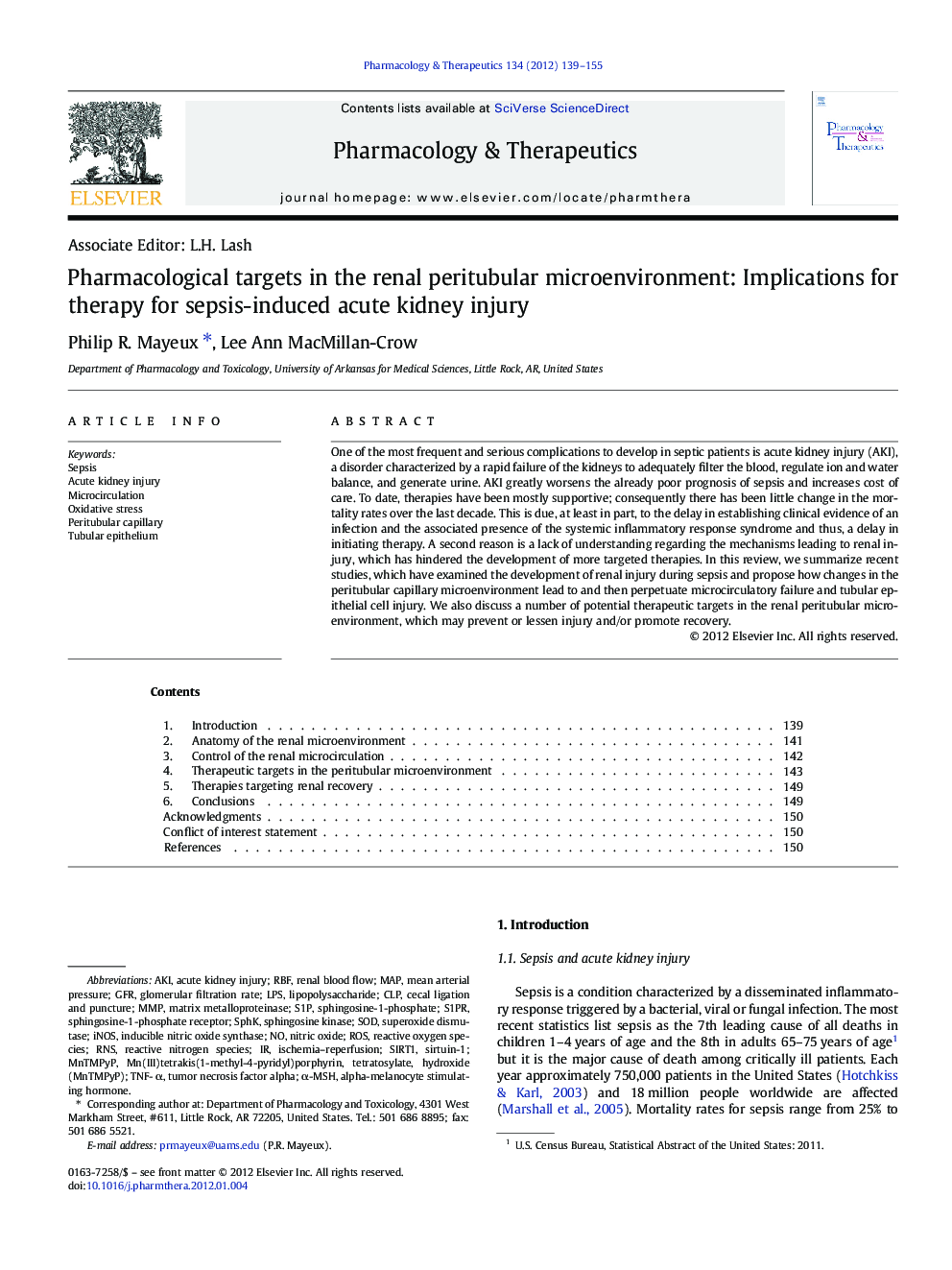| Article ID | Journal | Published Year | Pages | File Type |
|---|---|---|---|---|
| 2563439 | Pharmacology & Therapeutics | 2012 | 17 Pages |
Abstract
One of the most frequent and serious complications to develop in septic patients is acute kidney injury (AKI), a disorder characterized by a rapid failure of the kidneys to adequately filter the blood, regulate ion and water balance, and generate urine. AKI greatly worsens the already poor prognosis of sepsis and increases cost of care. To date, therapies have been mostly supportive; consequently there has been little change in the mortality rates over the last decade. This is due, at least in part, to the delay in establishing clinical evidence of an infection and the associated presence of the systemic inflammatory response syndrome and thus, a delay in initiating therapy. A second reason is a lack of understanding regarding the mechanisms leading to renal injury, which has hindered the development of more targeted therapies. In this review, we summarize recent studies, which have examined the development of renal injury during sepsis and propose how changes in the peritubular capillary microenvironment lead to and then perpetuate microcirculatory failure and tubular epithelial cell injury. We also discuss a number of potential therapeutic targets in the renal peritubular microenvironment, which may prevent or lessen injury and/or promote recovery.
Keywords
α-MSHCLPiNOSRNSSphKS1PSirtuin-1AKIRBFMnTMPyPLPSS1PRGFRPeritubular capillaryMMPSirt1ROSTNF- αacute kidney injurySphingosine kinaseSphingosine-1-phosphateCecal ligation and punctureTubular epitheliumischemia–reperfusionOxidative stresstumor necrosis factor alpharenal blood flowMicrocirculationSODinducible nitric oxide synthaseSuperoxide dismutaseSepsismean arterial pressurelipopolysaccharidematrix metalloproteinaseGlomerular filtration ratemapNitric oxidealpha-melanocyte stimulating hormonereactive nitrogen speciesReactive oxygen speciessphingosine-1-phosphate receptor
Related Topics
Health Sciences
Pharmacology, Toxicology and Pharmaceutical Science
Pharmacology
Authors
Philip R. Mayeux, Lee Ann MacMillan-Crow,
